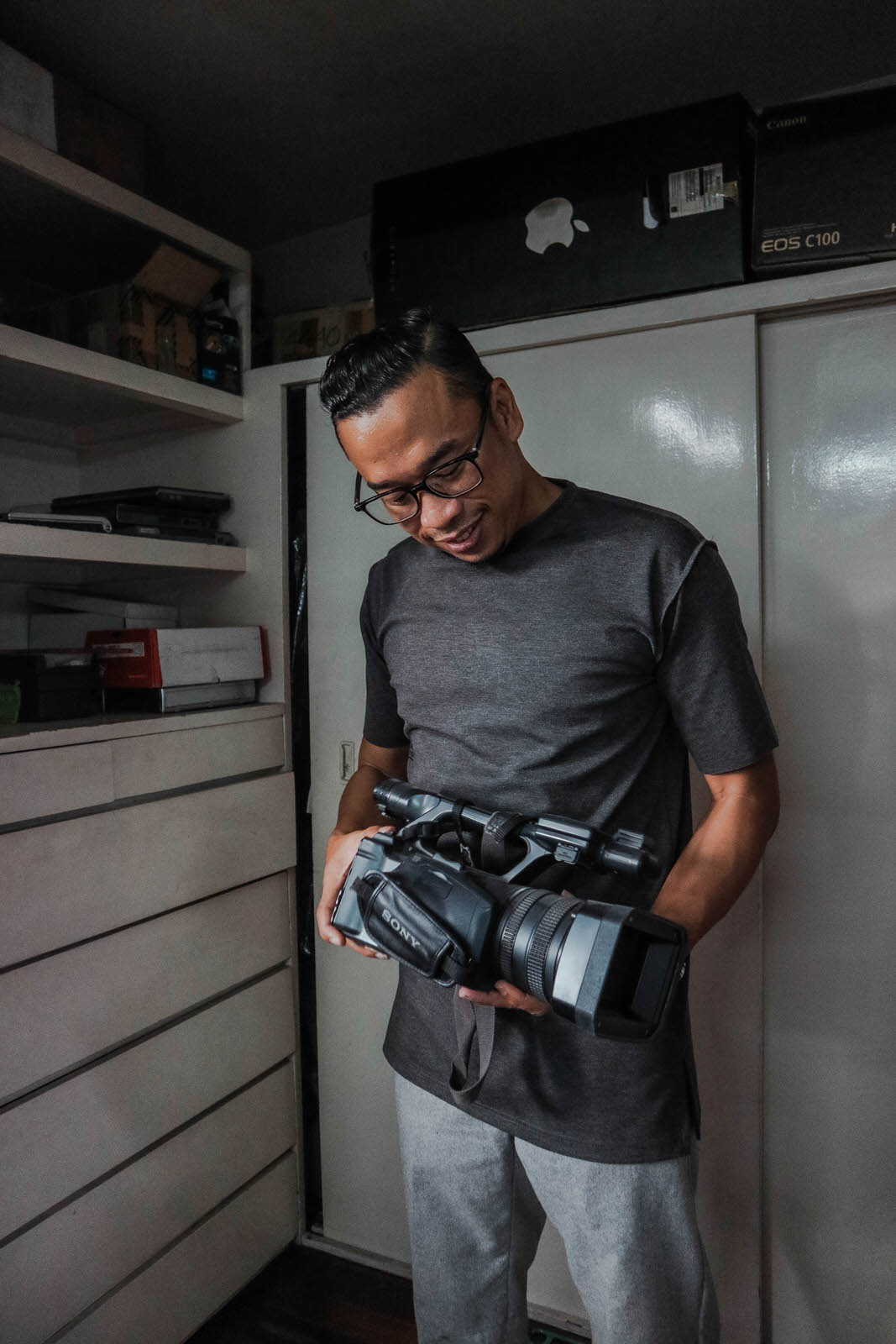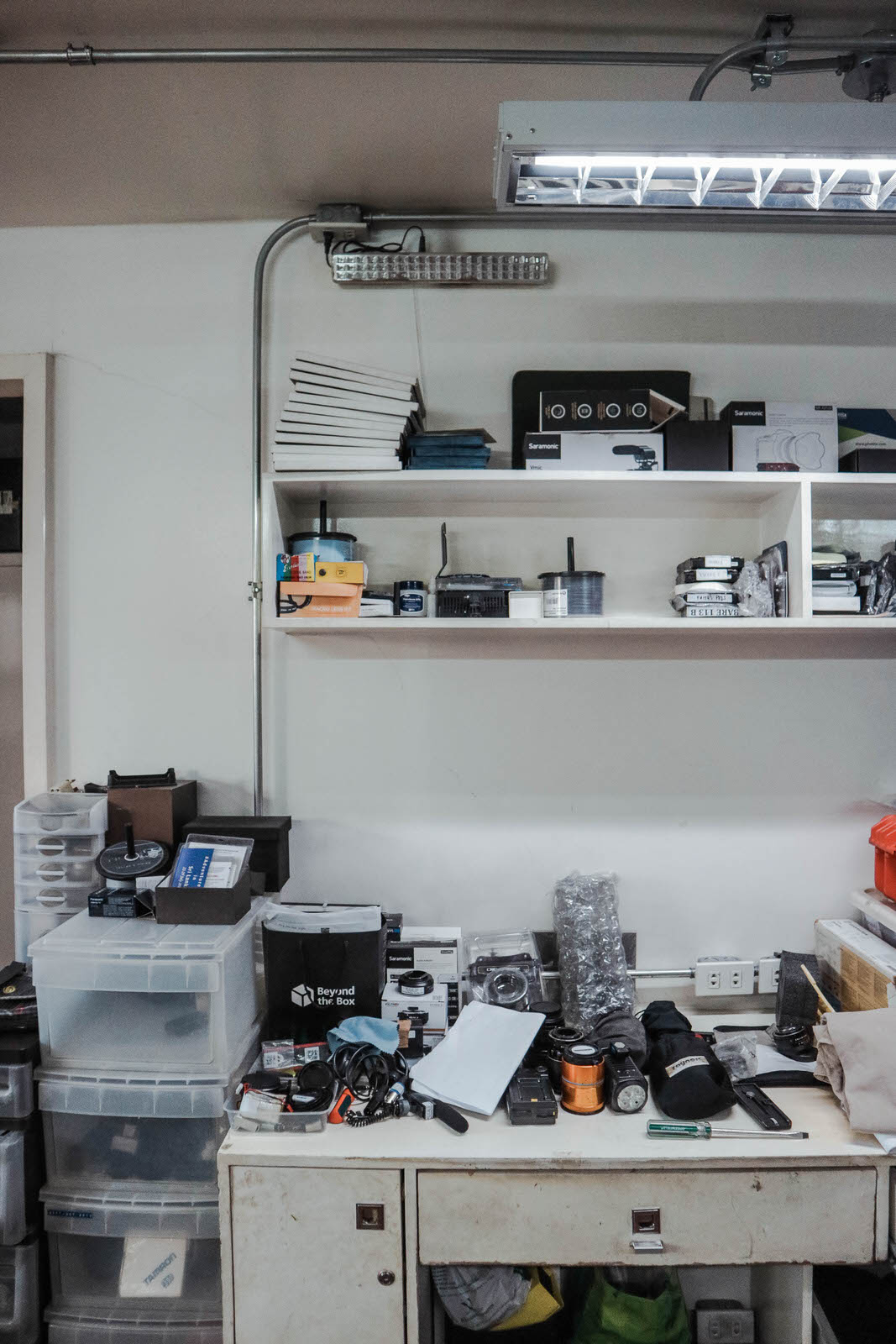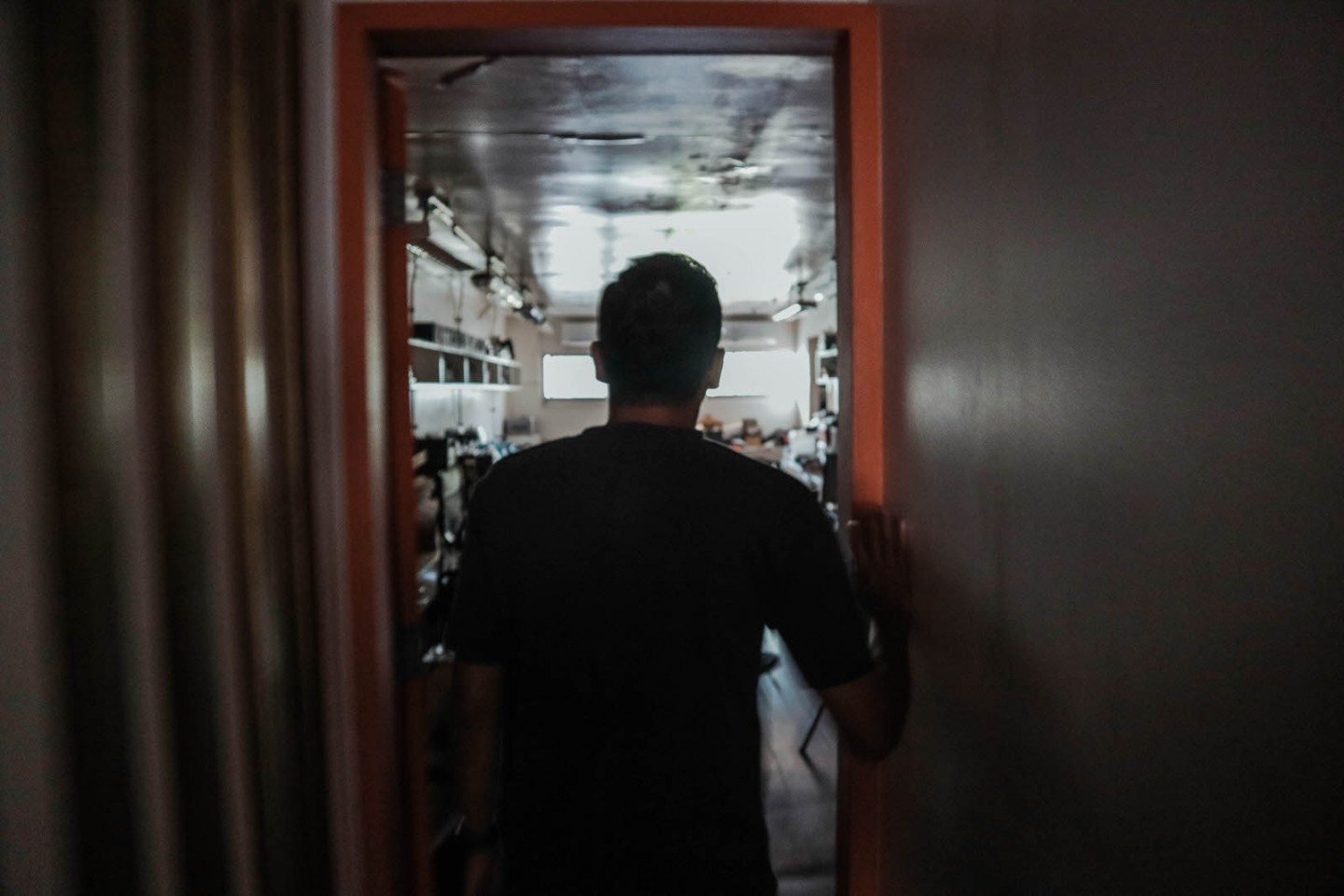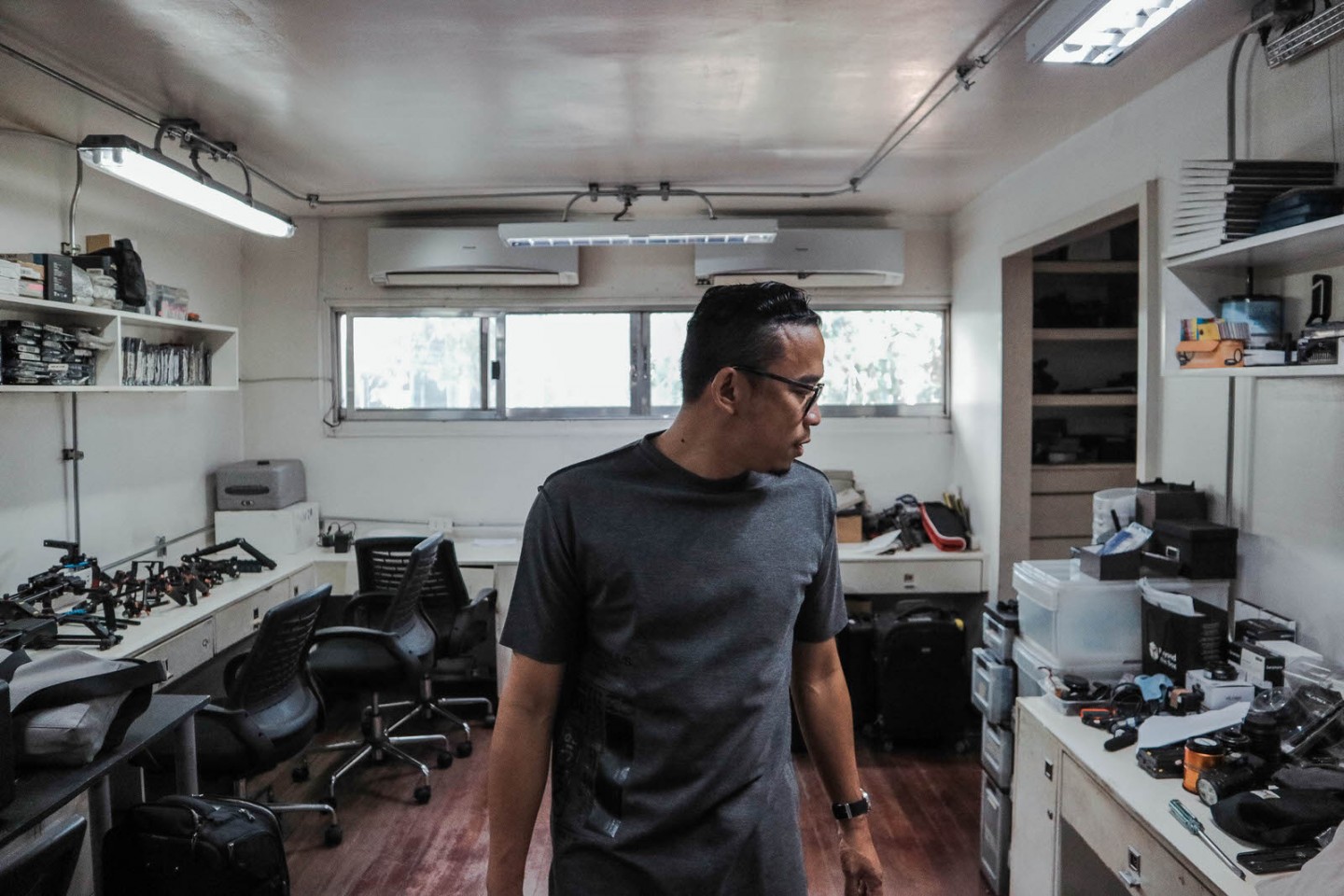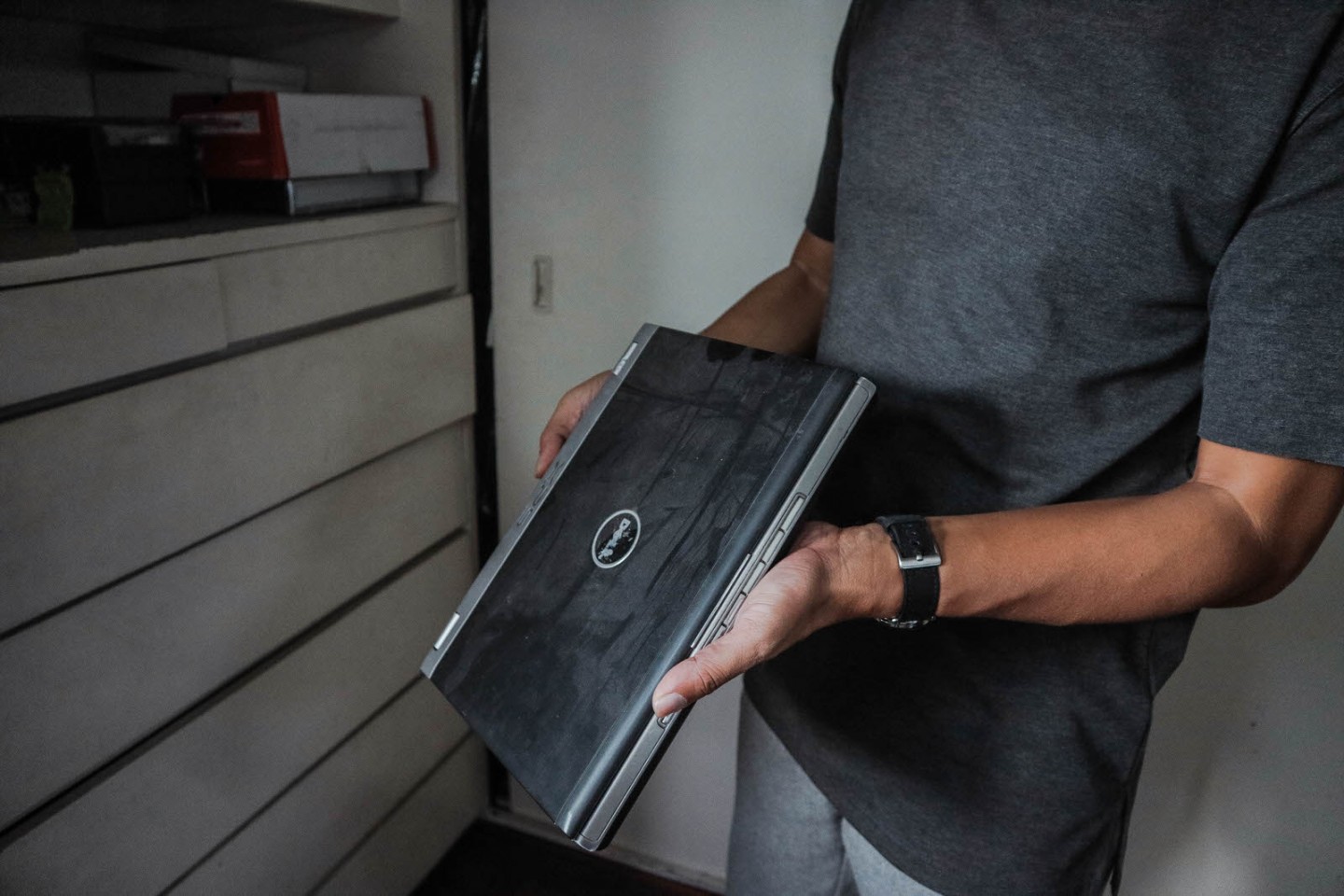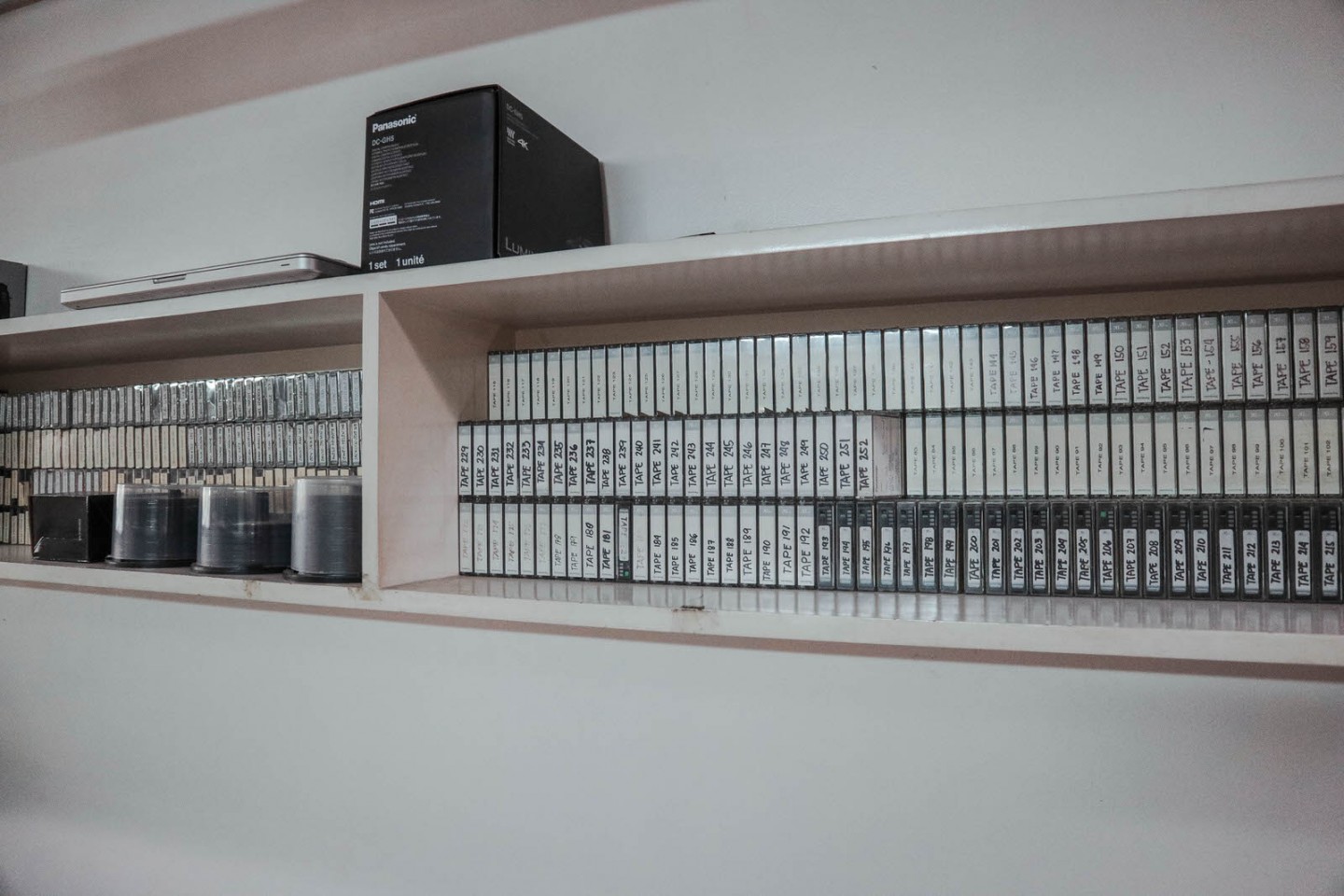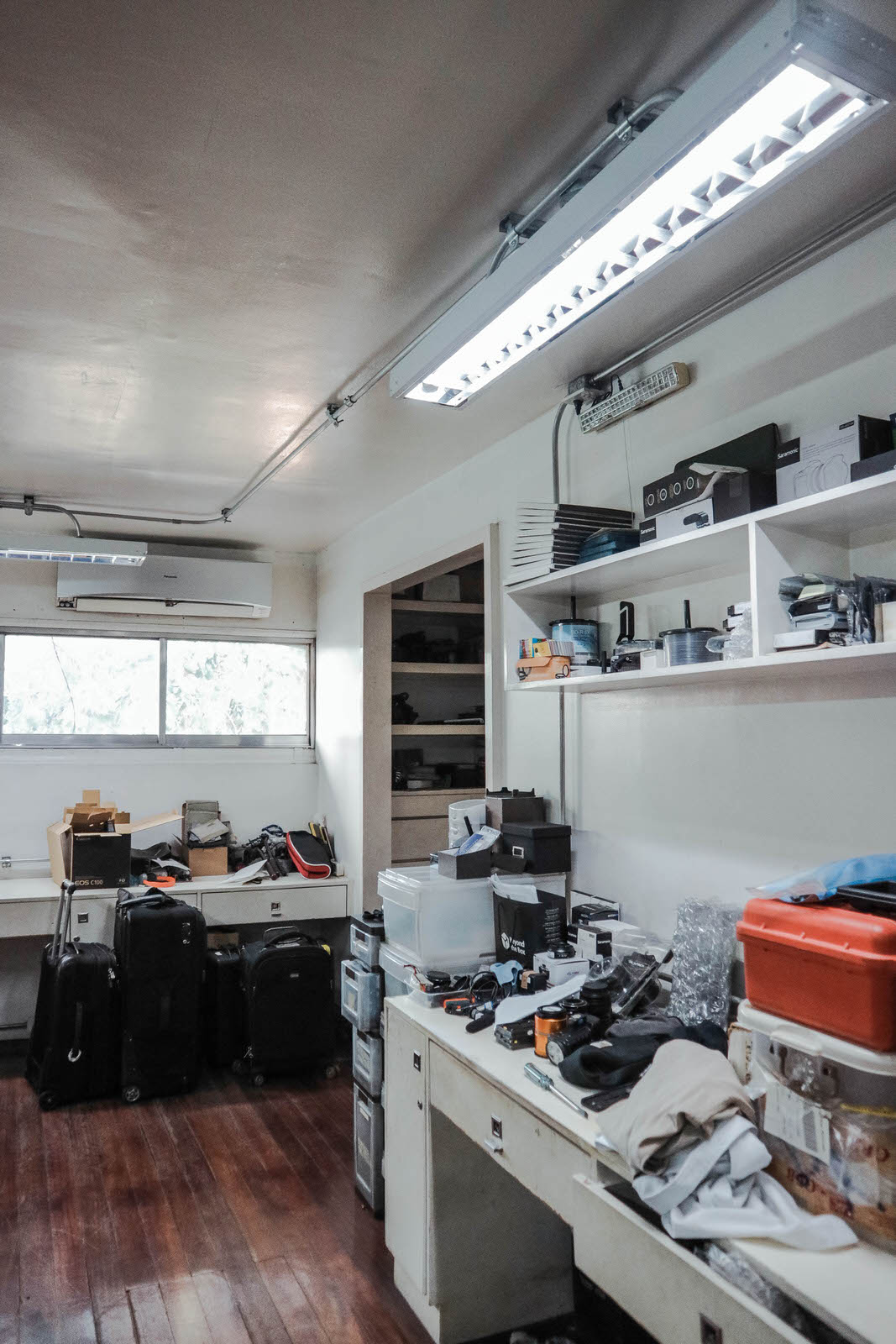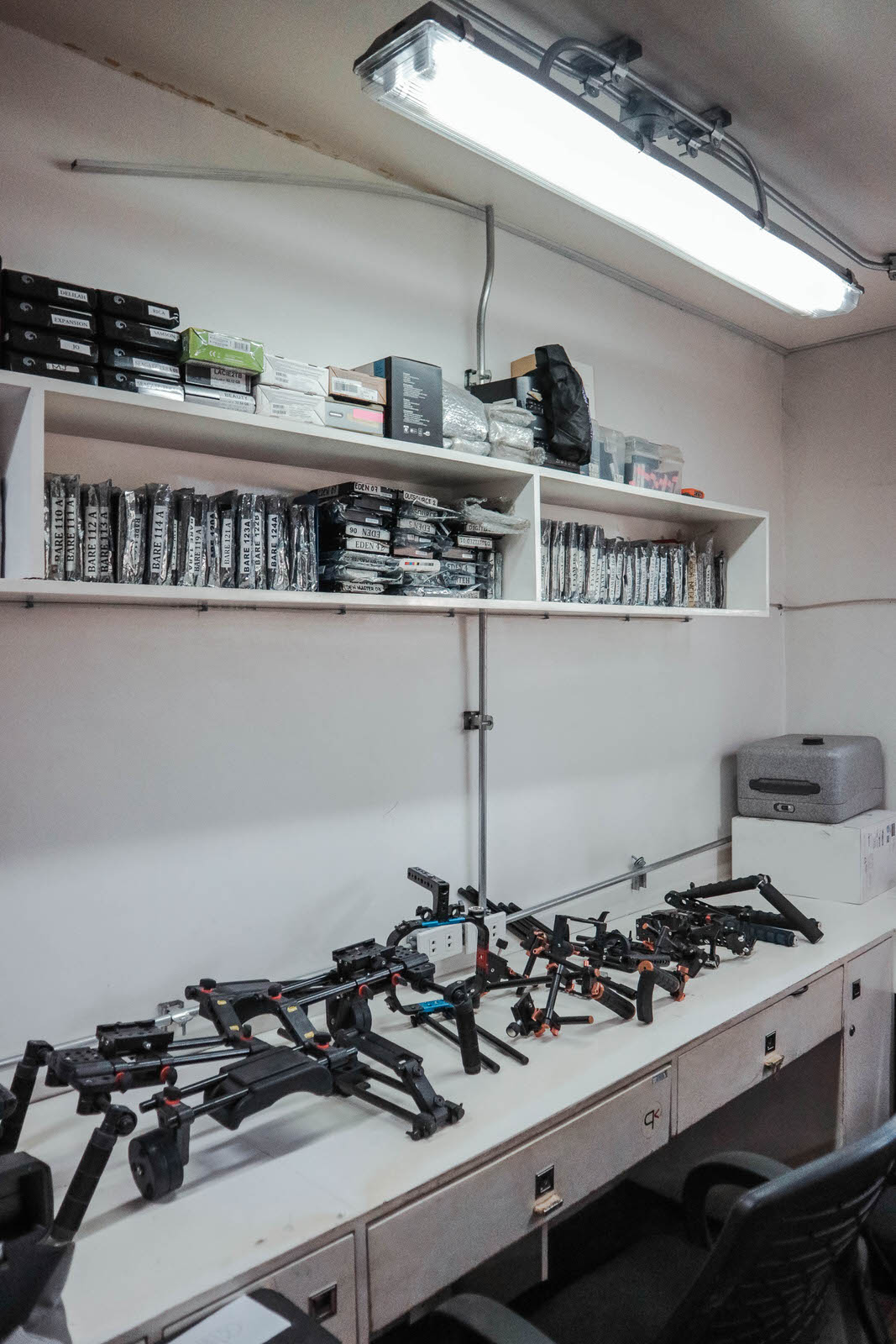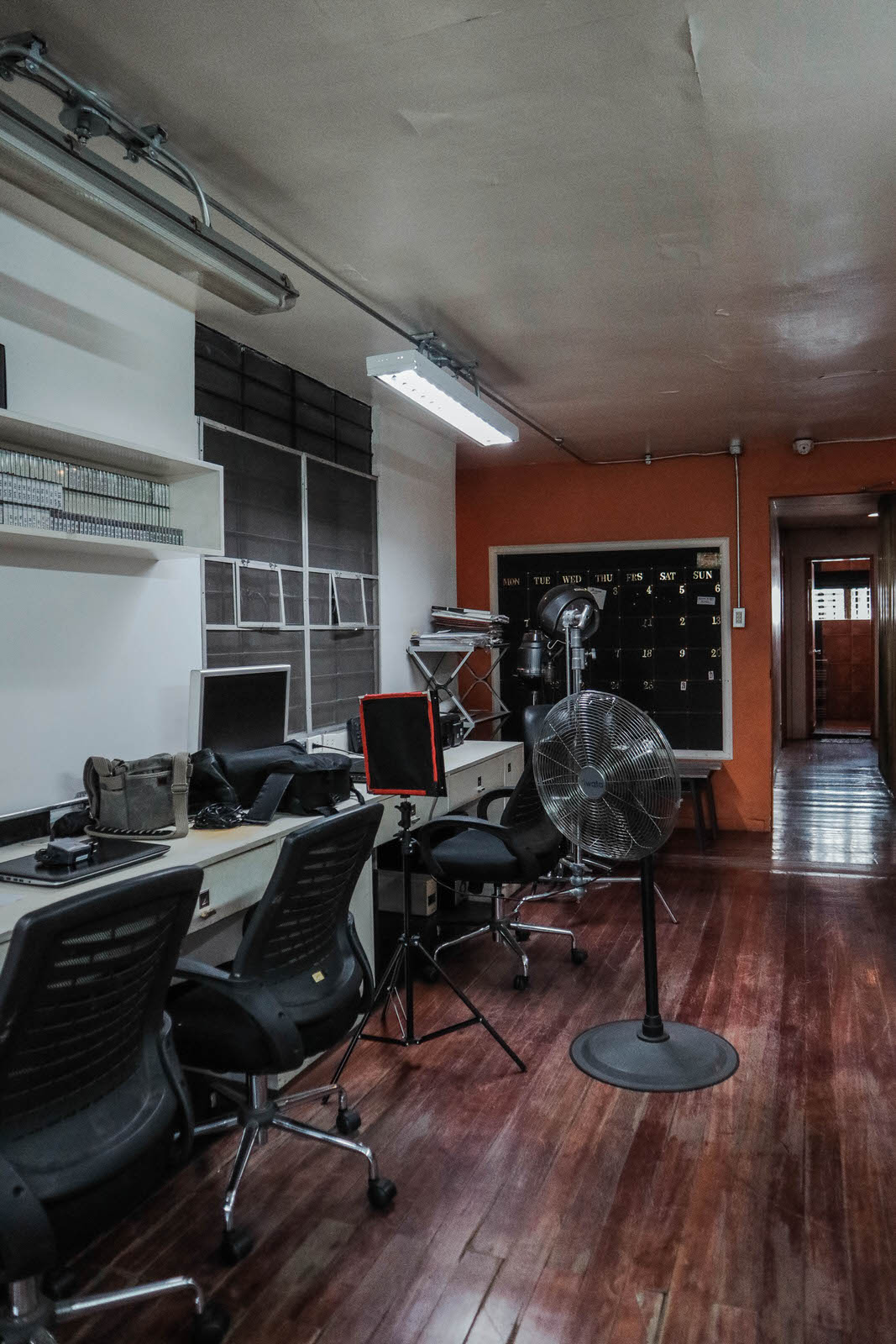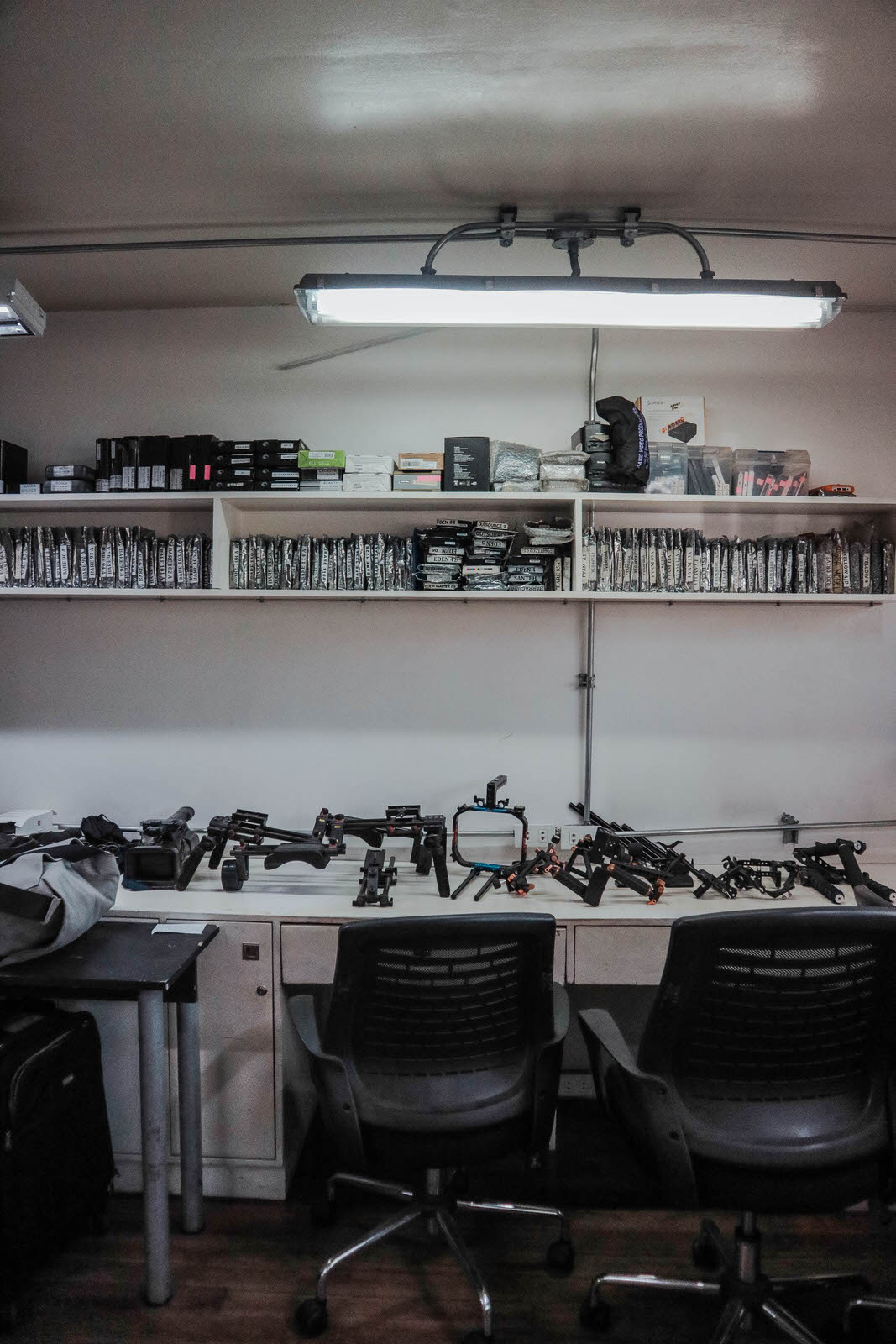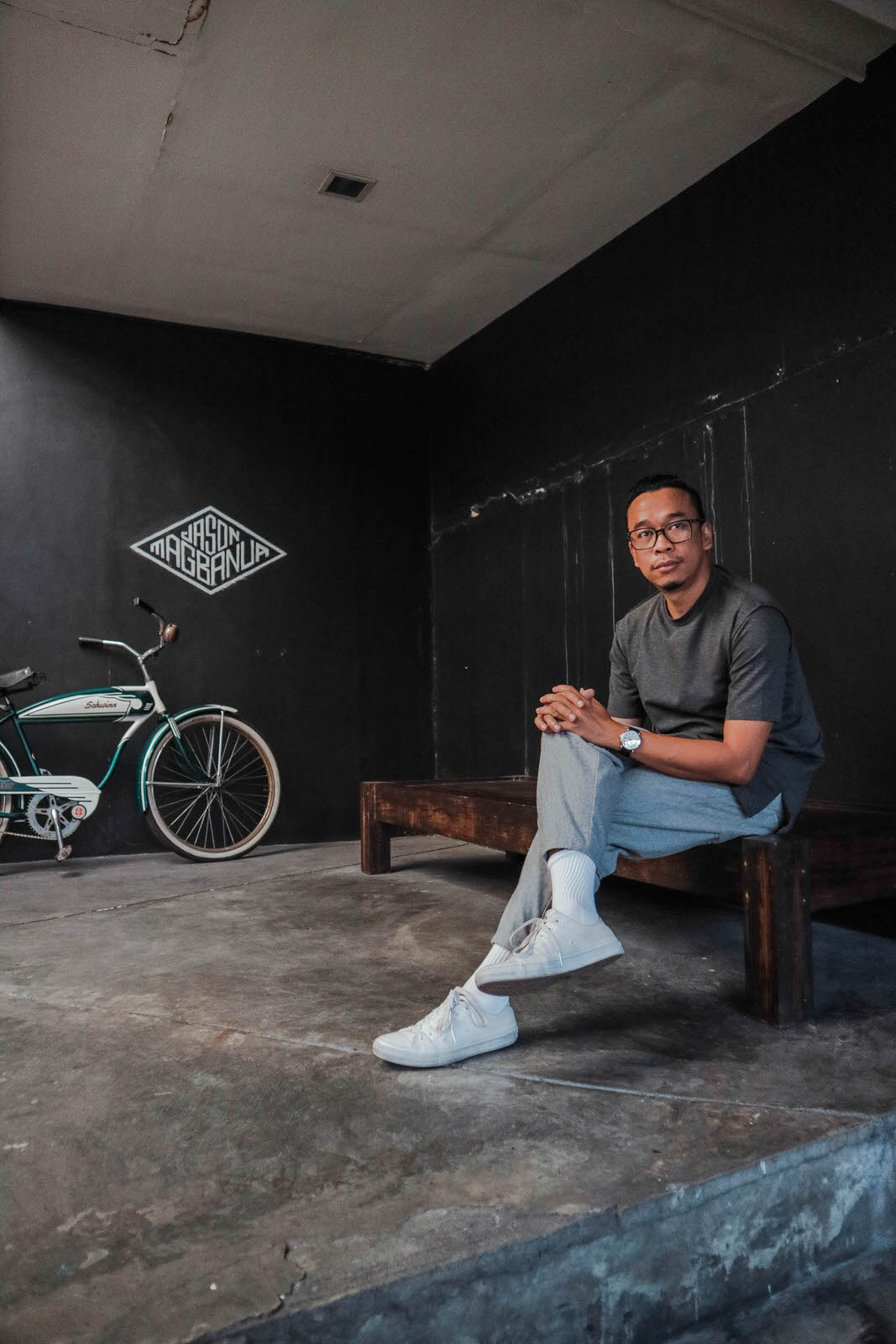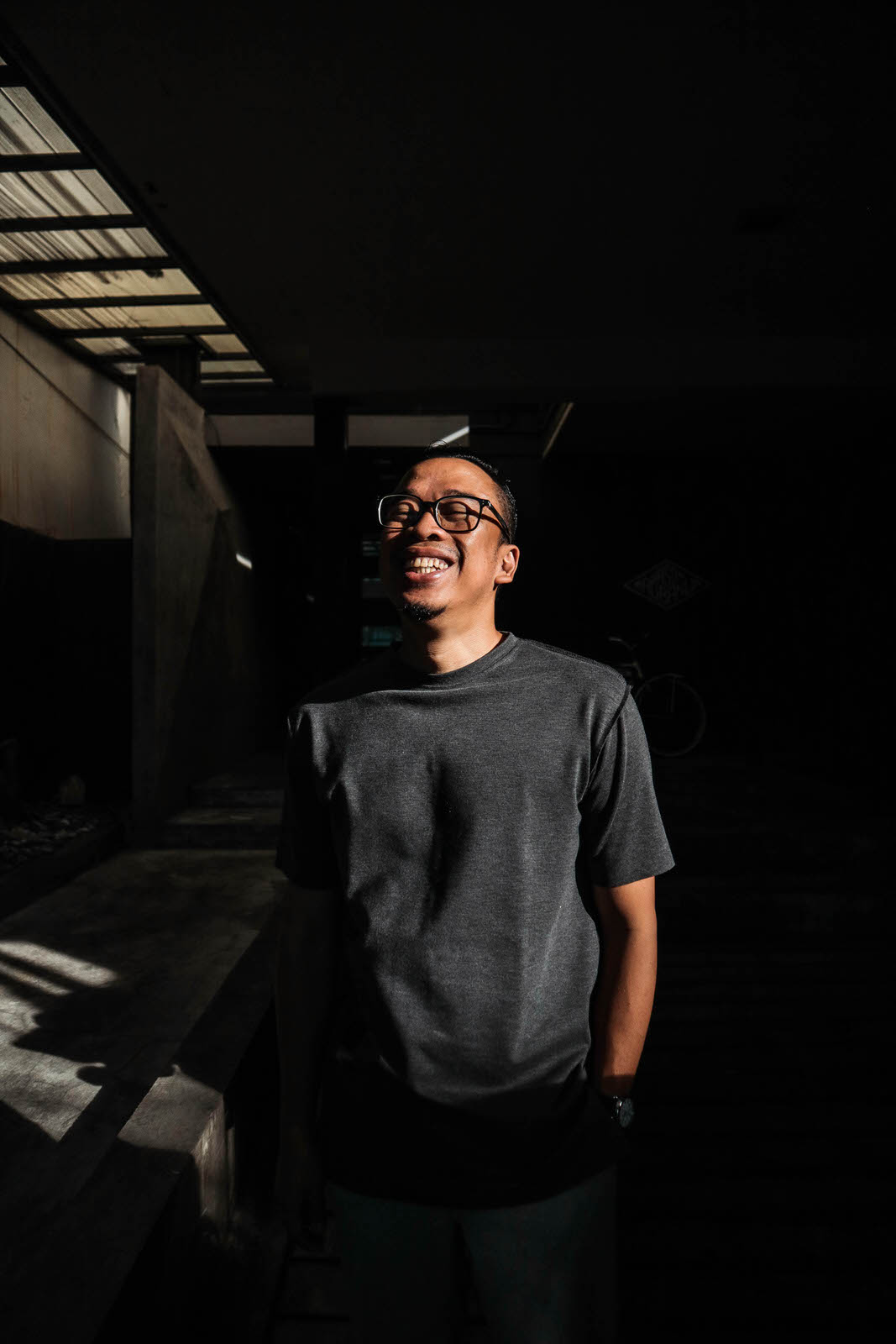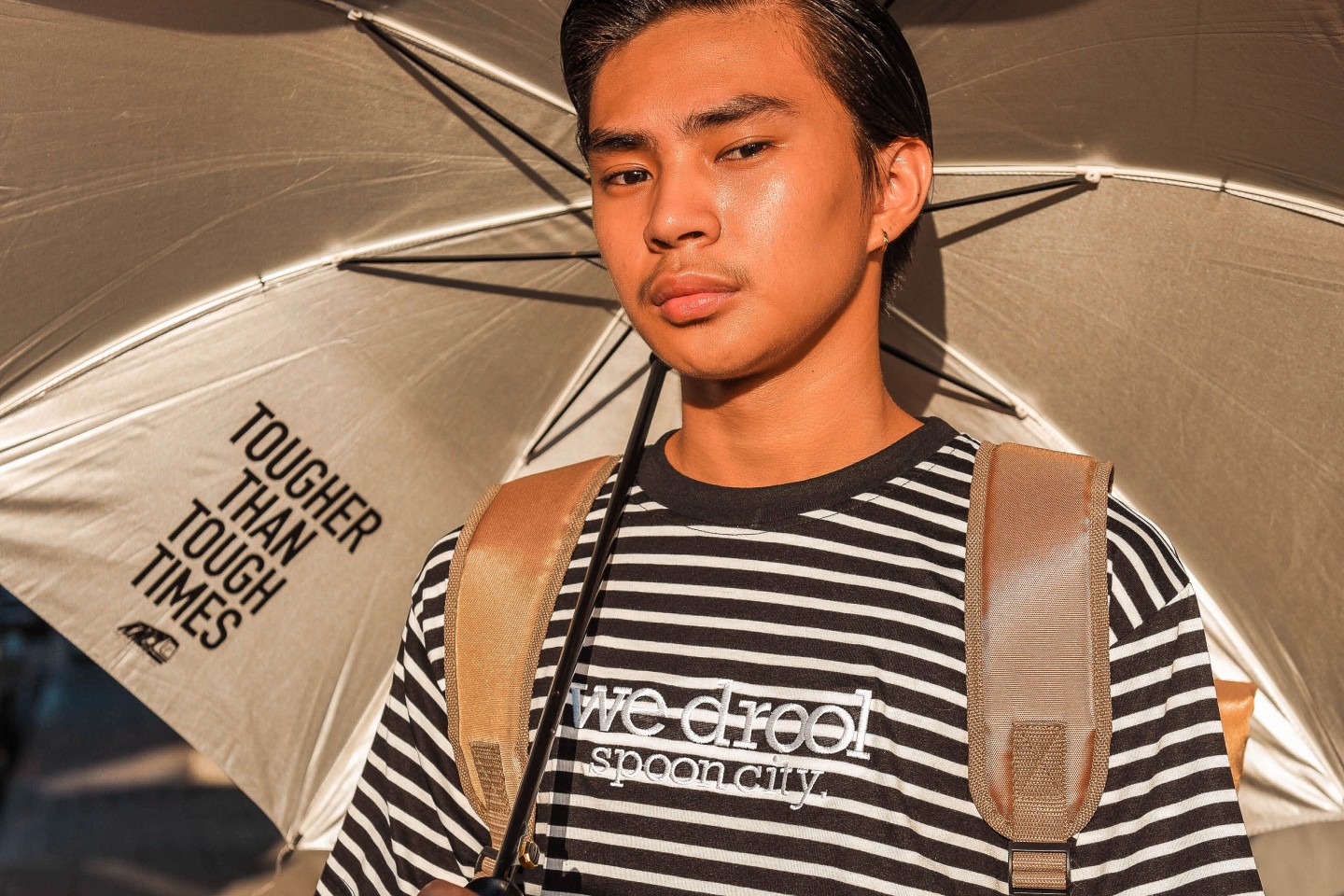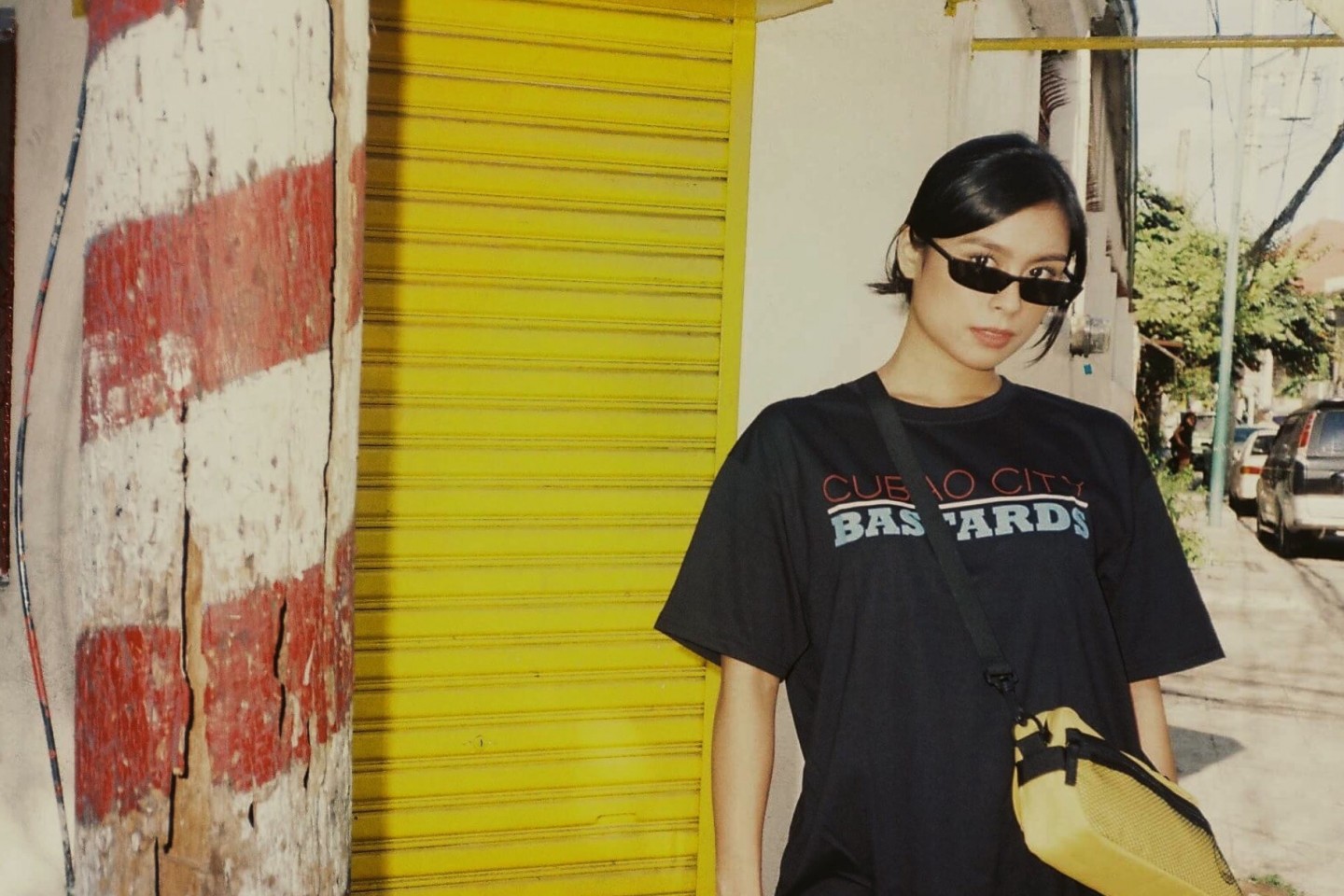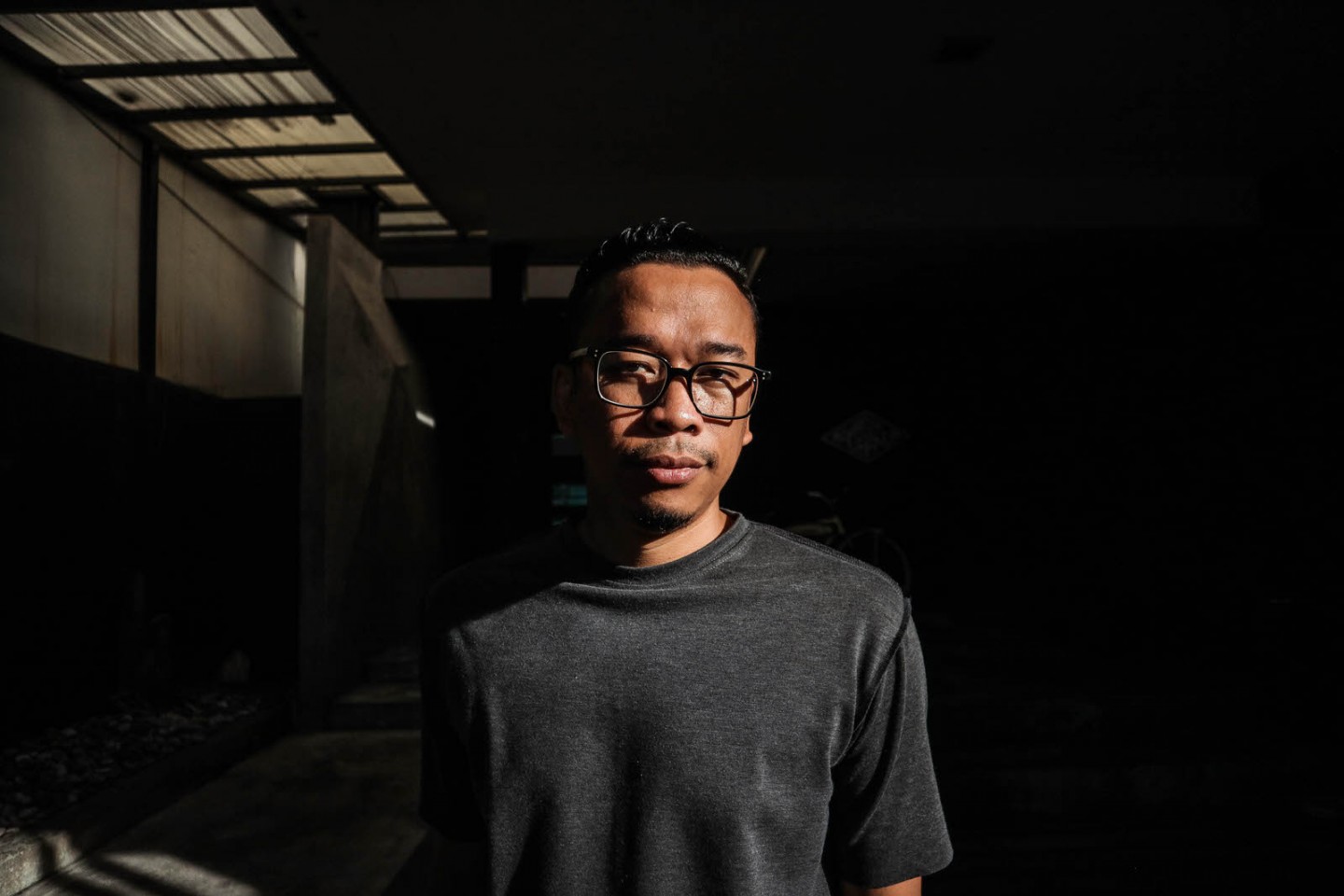
During the era where time was exponentially becoming a rare commodity, the wedding scene started to steer away from the default two-hour-long wedding videos filled with zoom-in zoom-out, fade-in fade-out, and Ikaw by Sharon Cuneta playing faintly in the background of what used to be reserved for the manong-in-barong holding a camera on the right hand, and an enormous blinding light on the left. It’s as if the scene started wanting something more without essentially knowing what or perhaps a hero without a cape that would save people from the two-hour waiting game.
That’s it. That’s when Jason Magbanua, renowned wedding videographer entered the scene and pitched something that people never knew they needed.
Surrounded with vintage cameras in a quiet corner of his office a few minutes before sunset, Jason, looking shamelessly intoxicated with nostalgia, recalls perfectly how the wedding industry evolved into what is now a space injected with creativity. Big ups to the revolution and the corresponding domino effect, the luxury of viewing same day edit (SDE) wedding videos are enjoyed one long decade after.
And as if he never gets tired of storytelling, Jason sits down with us – this time with no camera on-hand – and shares a seemingly vital playback on how art got infused into wedding videos and what we can learn from it.
Can you tell us a bit about the wedding industry in the past?
The wedding industry met a lot of constraints in the past. In terms of technology, limitations of the medium, constraints in terms of perspective of people, and of how this industry was running. For example, people would say, “Baduy ang wedding” (weddings are tacky) or “Cheap ang wedding” or “Ang wedding video hindi dapat ginagastusan” (weddings shouldn’t be expensive), and “Hindi siya profitable” (it’s not profitable). Stereotypical – the way people viewed wedding videographers in general. I think as a person who has been doing this for the longest time, those were the things that we had to really break away from.
To be honest, 15-17 years ago when I was starting this, I didn’t look at it like “Oh! babaguhin ko ang lahat, at magiging revolutionary to!” (I will do this and it will be revolutionary) No, no, no. It was very much rooted to make a name for myself, to be the best at what I could be and to earn from it. I had very modest aspirations when I started and even later on when people kept saying, “Uy wow ikaw, iba ka! Nabago mo ‘yan!” (Props to you, you changed the industry!). I brushed it off, but in my mind, I realized that I did do something different. Looking back, I think that’s something to be proud of. But you know, I don’t go around and brag about it. I just continue to do what I’ve been doing for the longest time – be excellent at what I’m doing, try to inspire others by being a good example and role model.
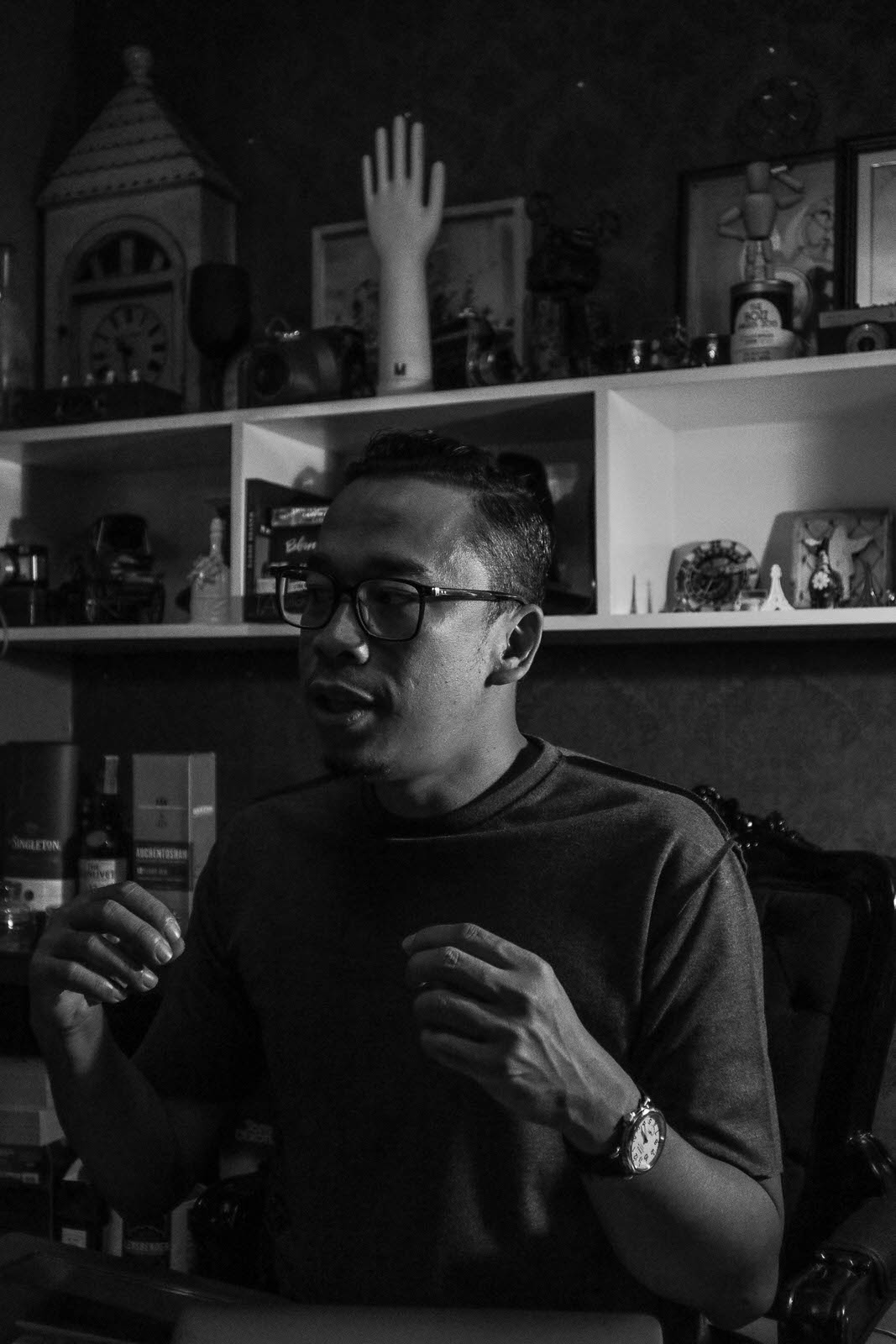
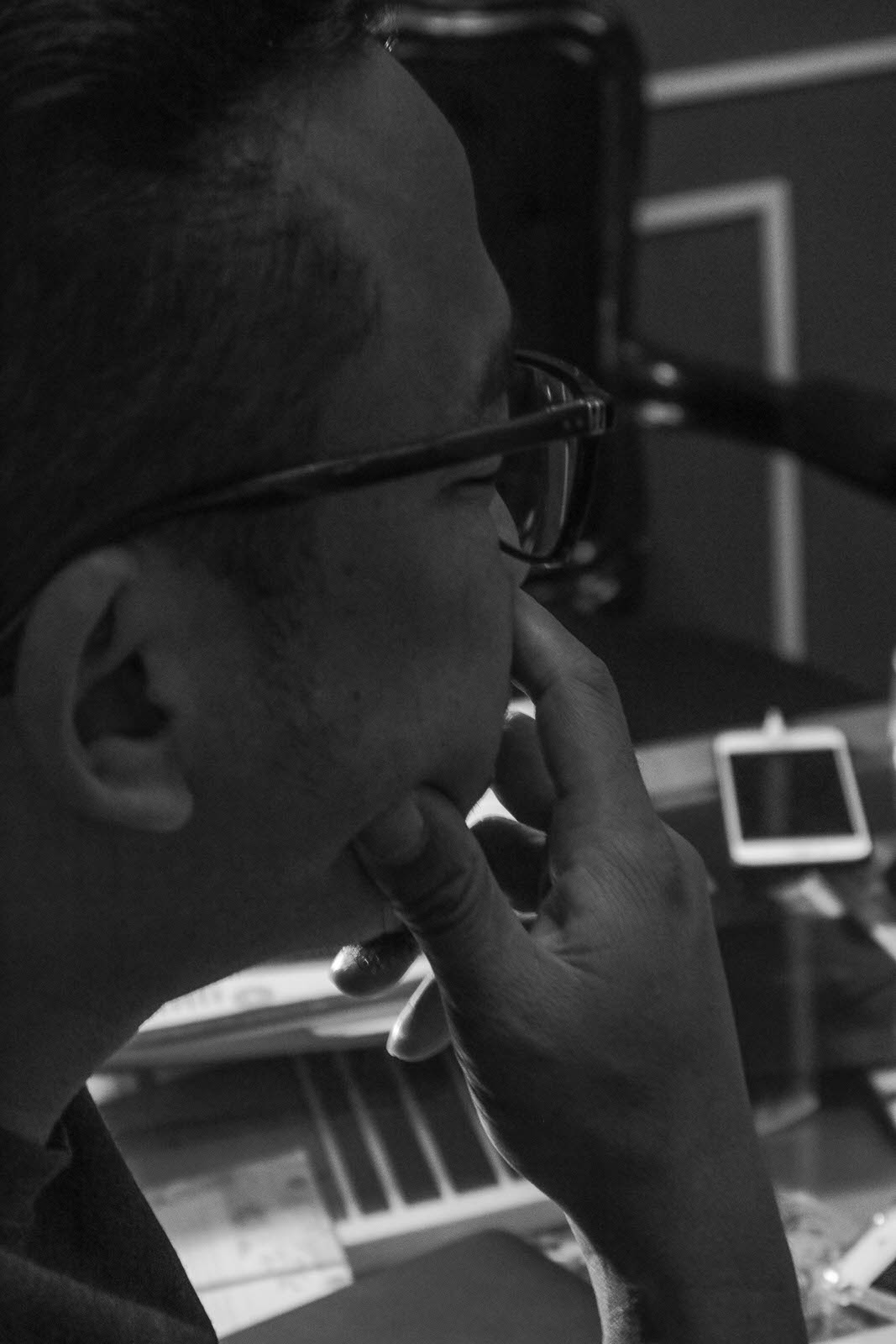
What led to the wedding videography revolution? Is it because of the demand?
No, the demand wasn’t there yet. It was a matter of saying that “Hey, I am able to create a beautiful, amazing product.” It was like telling people back then that they needed something before they even knew it. Here’s what I’m offering – like popular music could be used for weddings, and even fast cuts as well.
But why do you think it took a long time for the industry to shift?
Because there was hesitation at first. It was truly, truly something new. I remember people in bridal fairs would say, the titas and moms, “Ang bilis naman niyan! Ang bilis ng cuts. Nakakahilo!” (It’s too fast. The cuts are fast. It’s dizzying!) because this was the time that hand-held was a thing, documentary type of shooting was trending. So there was resistance because they can’t accept that wedding videos can be like that. At the same time, the quality and technology wasn’t as good yet. So even though the edit and footages were nice, it wasn’t as high quality. I think it also coincided with the social media and the rise of the internet, the shareability of videos. But it took some time, maybe 5 to 6 years from the time I started.
…we need to shoot things right the first time around. We do not have the luxury of second takes.
What triggered you to take part in revolutionizing the industry?
Some people regarded wedding video as “That’s not real video production.” I’ve always wanted to prove to people that it is a fucking real video production. It is so hard what we’re doing. I make it a point to tell people that we’re doing it on a regular basis, we’re on a one-take environment, we cannot ask our subjects to do this again, to do the vows again, to cry again, to react again, and therefore, we need to shoot things right the first time around. We do not have the luxury of second takes. So parang, “Papatunayan ko na mahirap ‘tong ginagawa ko, na maganda ‘tong ginagawa ko at pwedeng pagkakitaan. [I’ll prove] That it can be creative, that it is difficult, and it can be profitable.”
So you’ve always approached what you do in that light?
Yes, yes. I always regarded it that it’s not a means to an end, but it is an end as it is. I’m not making wedding videos because I want to be an indie film director in the future. Gumagawa ako ng wedding videos dahil ayun ang gusto kong gawin. (I’m making wedding videos because that’s what I really want to do.) It is not a path to anything else. I get offended when people ask me, “Jason kailan ka ba gagawa ng indie film mo?” (Jason, when will you make an indie film?) Who said I want to make an indie film? I can make an indie film at my own pace, at my own time, but I mean, I’m perfectly happy with what I’m doing.
Based from your experience, what does it take to revolutionize an industry? Is there a formula?
“No, walang pattern ‘yan, walang logic, walang formula.” (There’s no pattern, logic or formula.) What I can tell you is that from the very start, personally, I wanted to change things, I wanted to shake things up. So the way that I approached my craft and my art from day one has always been like that. The revolution that you are referring to is a by-product of my personal desire to shake things up. Now, when others saw what I was doing, they brought it upon themselves to contribute to the so-called “revolution”, because a revolution cannot happen with one person only.
What inspired you to do a Same-Day-Edit? Was there anyone else who did it before you?
Nobody else was doing it yet at the time.
The inspiration of the Same-Day-Edit came from a bride who had a long break time from between the ceremony and reception. She asked me, “Hey, Jason would you be able to this for me? To show a part of the wedding video at the end of the reception.” and I said yes without knowing how to do it, because at that time, 2001, there were no laptops available for editing videos. Laptops then were only ideal for Powerpoint, Excel and Word, so I had to go home, edit on a desktop and bring it back to the hotel.
It was so stressful, I kept thinking “Am I going to be able to finish this? Are they gonna like it? Is what I’m doing right?” But when I showed it, there were a thousand people and everybody was applauding, people congratulating me. And then I realized, “Oh my god! I hit upon something here.” And the validation came from comments like “Oh my god Jason that was so great, that was so beautiful.” It was like crack. It was so addicting. I don’t usually admit it but “Shit, gusto ko ng ganung validation. Gusto ko ‘yung ganun, yung mahal ‘yung trabaho ko” (I like the validation, when people love what I create.) And so, “even though sobrang stressful gawin talagang hanggang ngayon ginagawa namin because napapasaya namin yung couple.” (even though it’s very stressful to make, we still do it because we bring joy to couples.) It’s now a signficant part of what wedding videographers do.
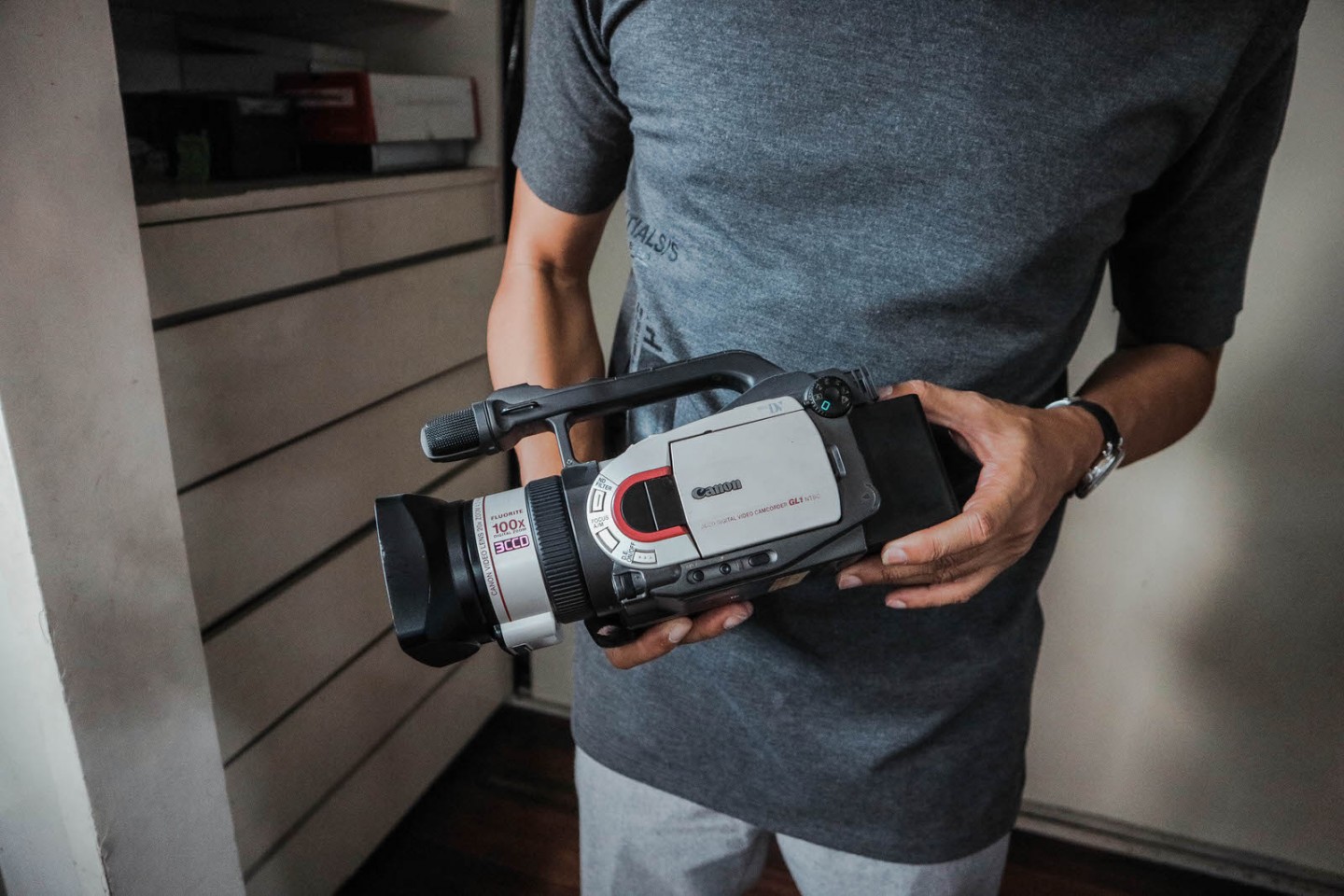
How did you deal with the traditionalists in the course of the wedding videography industry’s disruption?
Pay no mind. You pay no mind to the traditionalists, you pay no mind to people who think otherwise. If you have a great idea, push on. You push forward until that idea is accepted by a lot of other people.
“Ano ba ang traditional? Ang traditional, ikaw lang ang manonood ng video mo – ikaw, ‘yung asawa mo tapos siguro yung nanay at tatay mo rin. Yun yung papanoorin na lang natin sa 5th year anniversary, 2nd year anniversary.” (Traditional is when only the couple and the parents are the ones who will watch it, maybe on their 5th year anniversary or 2nd year anniversary.) No, I want a wedding video that could be shareable, that can and will be watched by a lot more people including friends, relatives, parents, and even strangers who would stumble upon it. They will watch it because it’s beautiful.
I’m thankful foremost because this revolution has afforded a lot of people a livelihood.
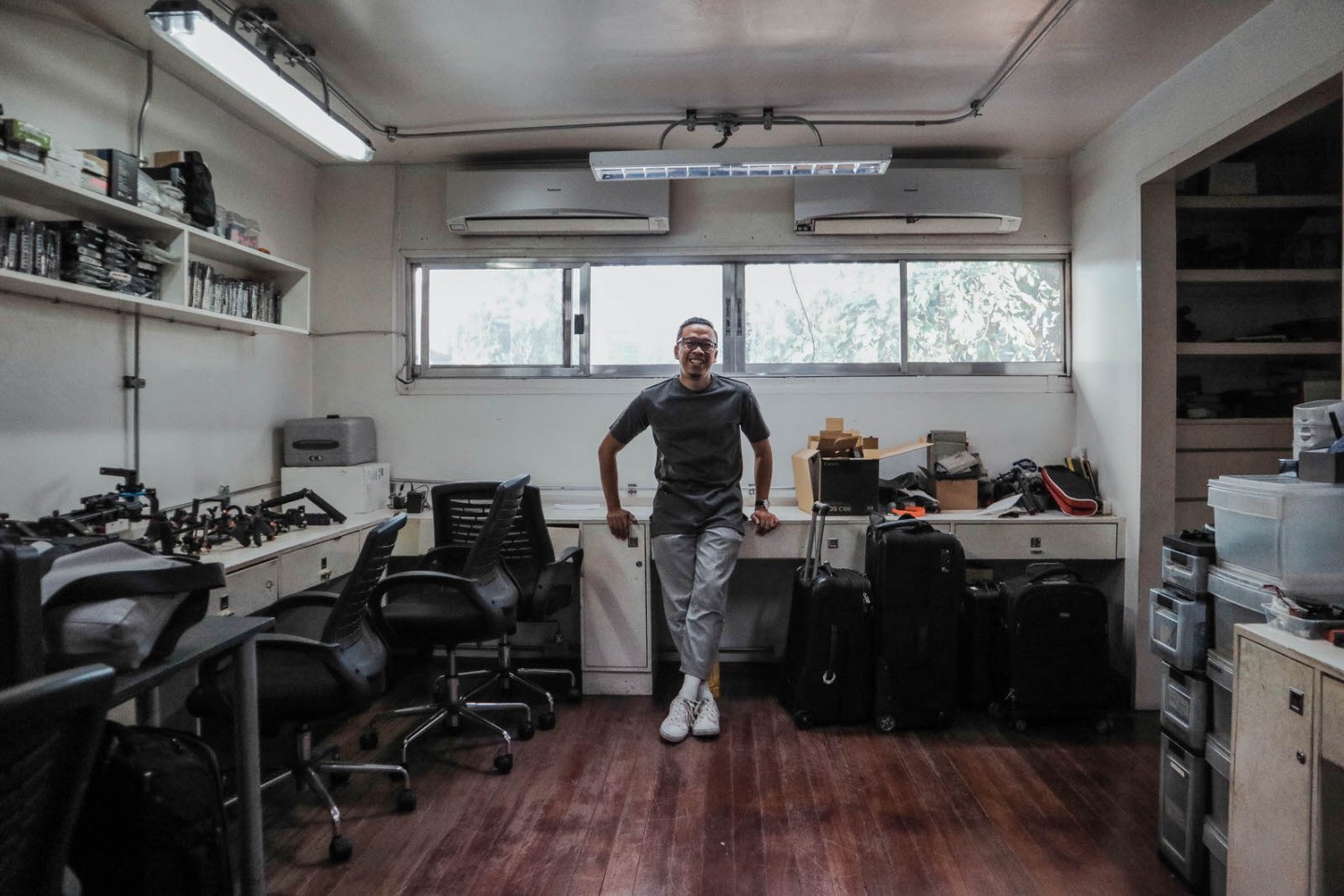
Any learnings from the revolution?
I supposed I’m thankful. I’m thankful foremost because this revolution has afforded a lot of people a livelihood. I see people in the industry who are sending their kids to good schools, building their houses, travelling the world and making people happy. So, I have become grateful that it has offered that to a lot of people and to me, of course. Being able to have a life that is comfortable.
Also, I learned that it may not pay off right away but in the long run, the decisions that you make for yourself now and in the past, you will reap them in the future. So the disruption you’re pertaining to, my choice to focus on wedding videos, the choice to pursue Same-Day-Edit videos even though it’s difficult, and choosing to educate and share my knowledge – I believe it’ll come back positively in some way in the end even if I don’t expect it, I believe it’ll come.
There are mistakes to make but there are successes to celebrate and cherish as well, because you did it your way.
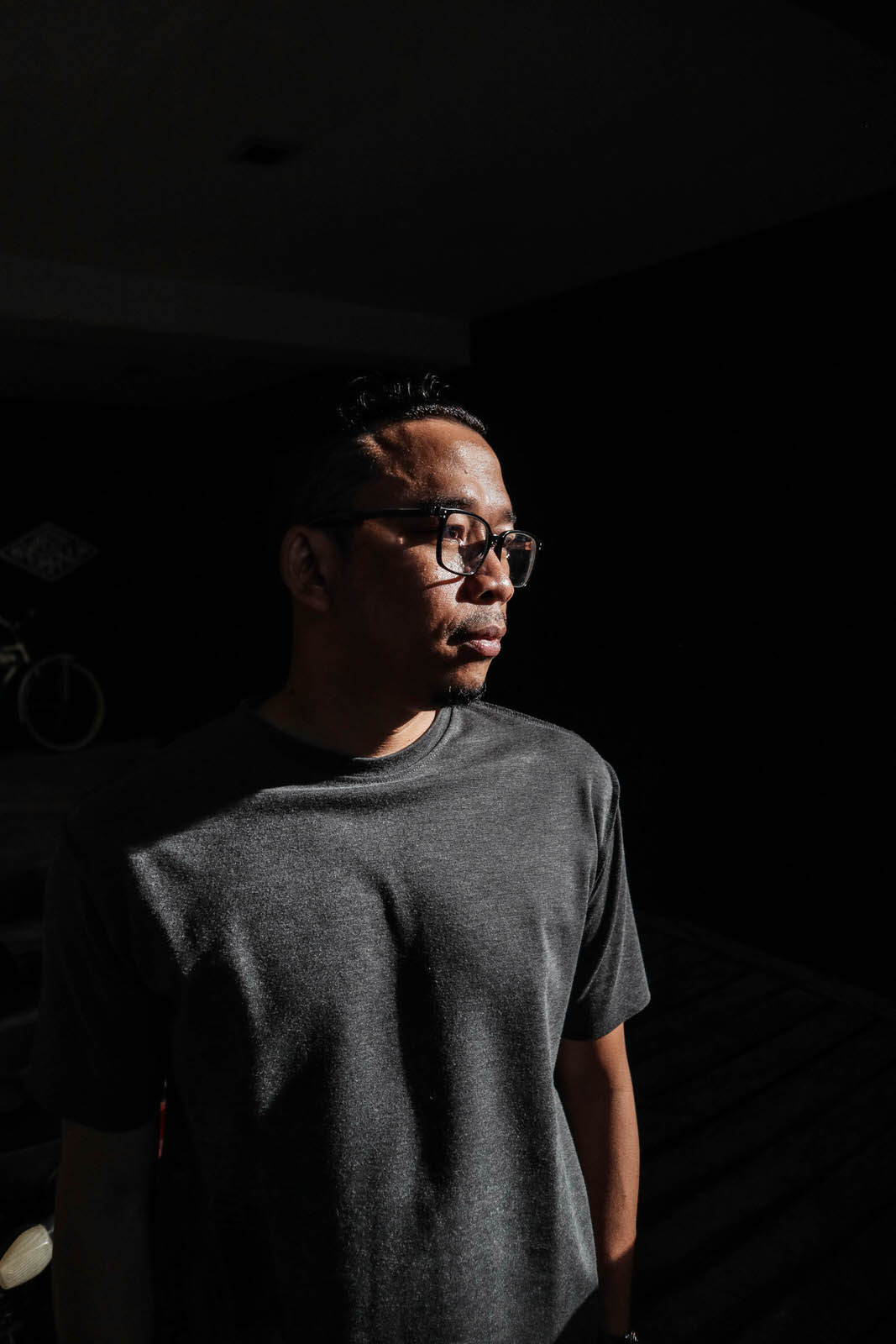
Do you have any suggestions on how we can use it for our own pursuits?
Sobrang hirap sa simula. Sobrang hirap. It’s so freaking difficult. I remember, commuting to Laguna, commuting to Manila, and to other parts of the Metro. I couldn’t even afford to ride taxis in 2000-2001, so it’s difficult. “Hi ma’am, hi sir, ito po ang video ko.” (Hi ma’am, hi sir, here’s my video.) I’ll show it through the tiny screen on my camera, “Yan po, ito po ang style namin, ito yung music namin, ito po ang rate sheet ko, Php7,500 po” (Here’s our style, the music we use, and here’s our rate sheet, Php7,500 for a video.) Then I’ll get a reply that’s in the line of, “Okay Jason, don’t call us, we’ll call you.” For every 10 people that I’ve met only one would push through. I thought, “Shit man, am I in the right industry? Kaya ko ba ‘to?” (Can I do this?) I was about to have a kid then, to make it harder. But the time came where I was getting more bookings, I was getting better at selling, and I was getting better making videos. I think that can transfer to other industries too. It will always be hard at the start, it will always be hard in any industry, but if you stick with it enough it’ll get better.
There might be a point where you’ll say “Fuck this, let’s not do this anymore because it’s not profitable,” but you don’t quit. I didn’t quit because I enjoy what I’m doing and I am passionate about it. There are mistakes to make but there are successes to celebrate and cherish as well, because you did it your way.

